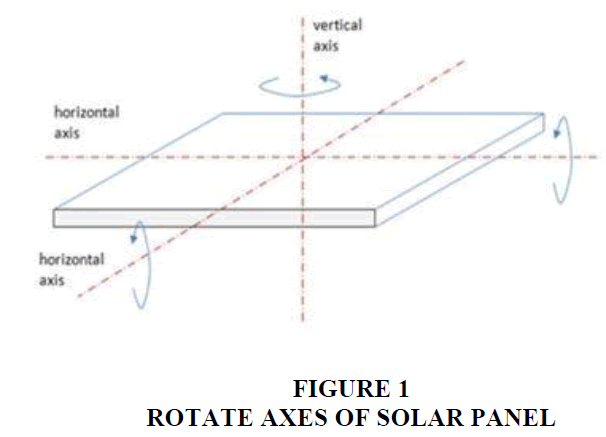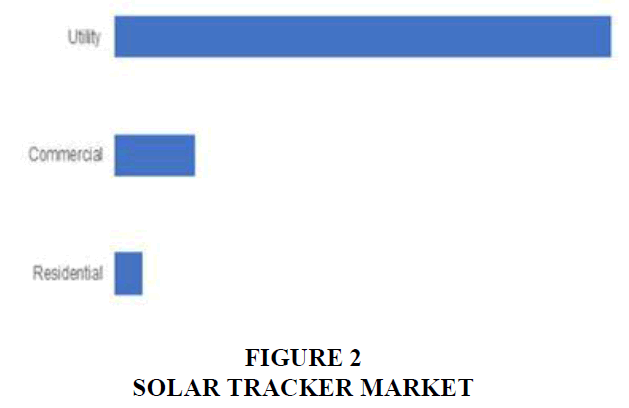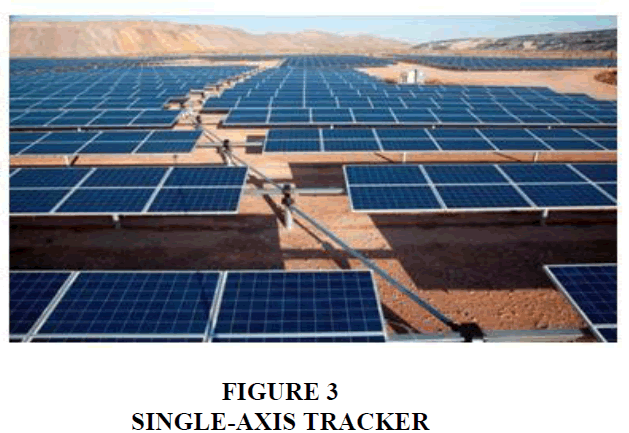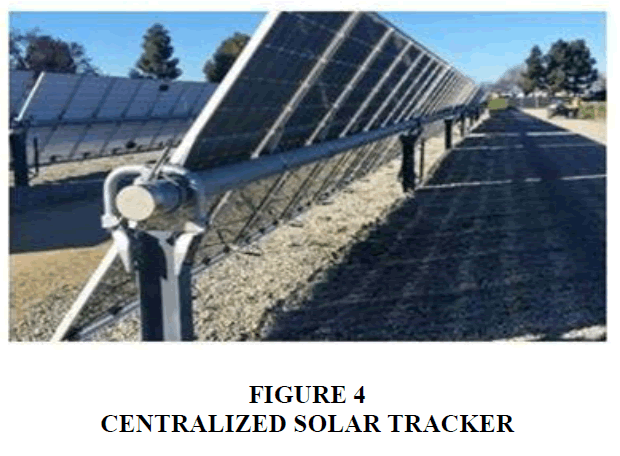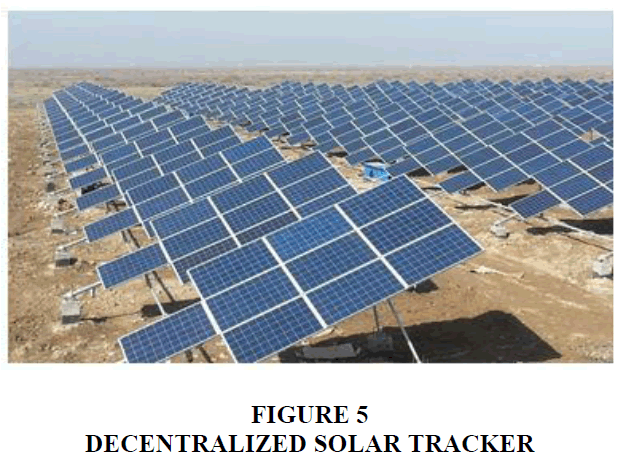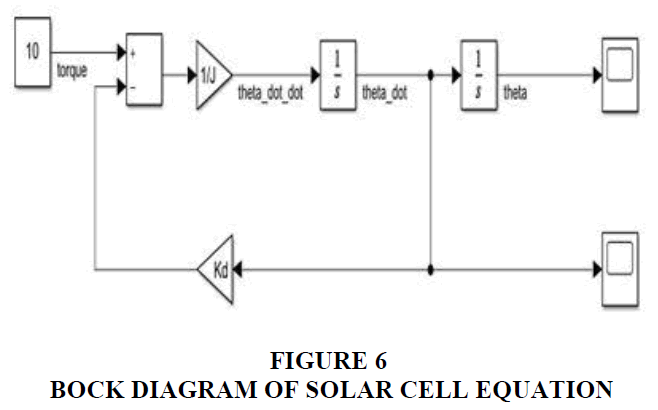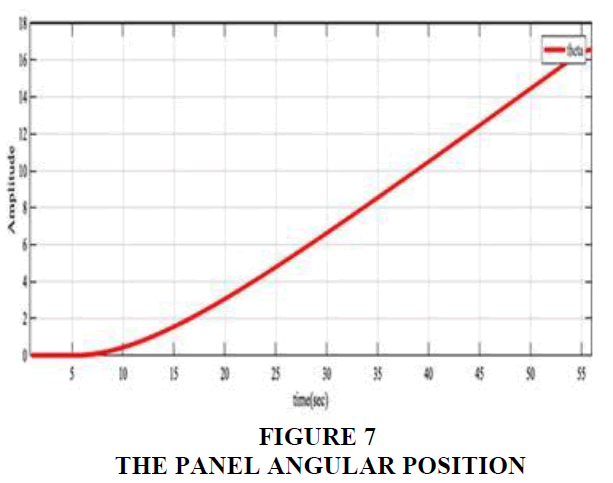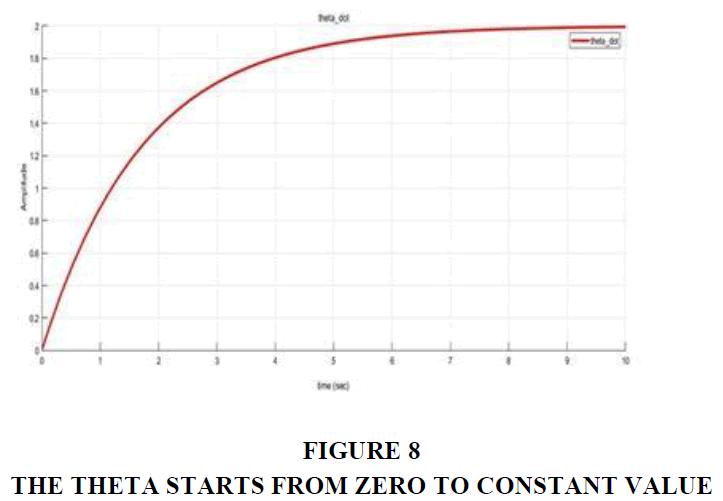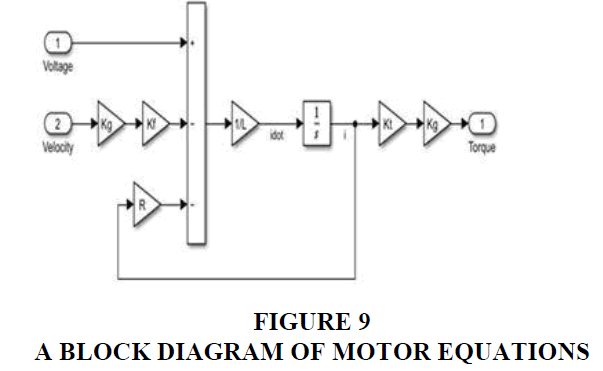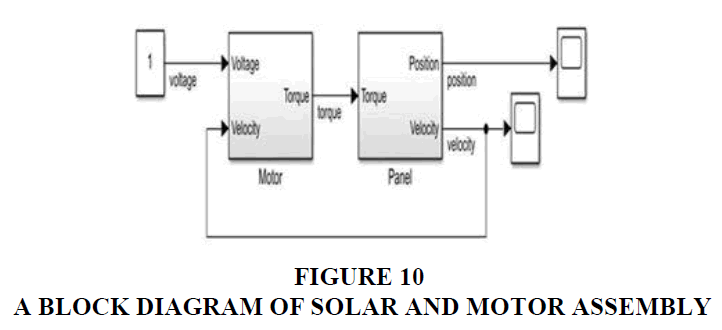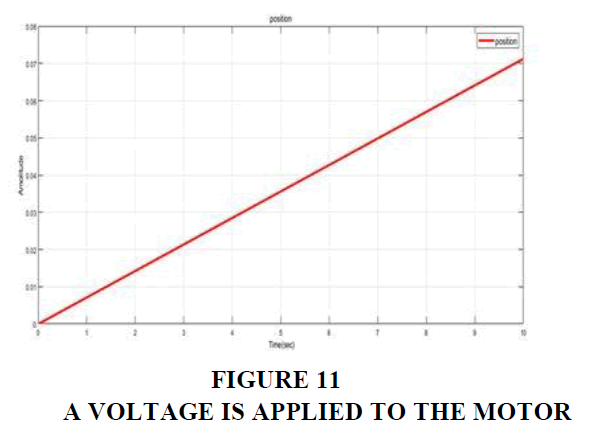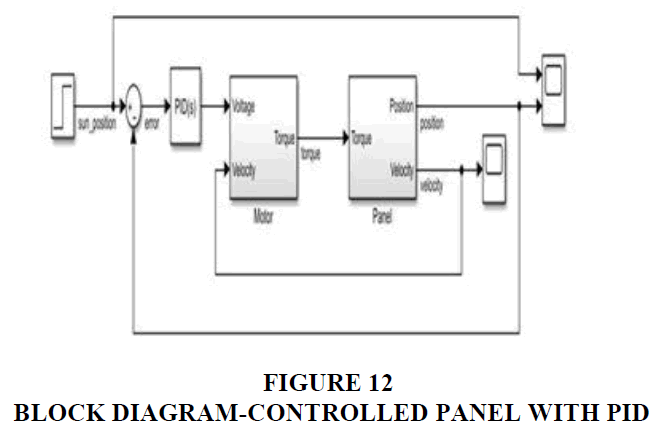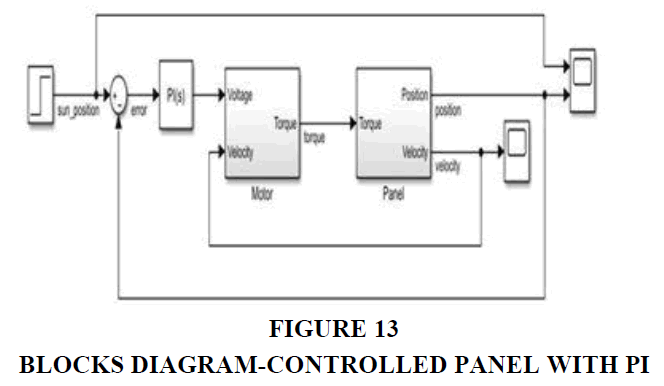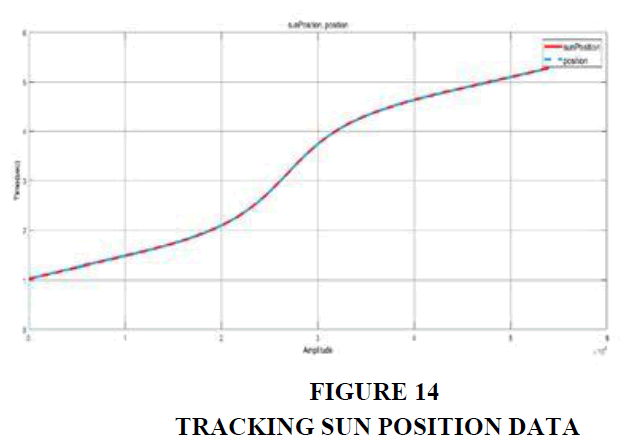Review Article: 2022 Vol: 28 Issue: 4
Improving the Efficiency of Solar Energy by Using Solar Trackers
Hayder Husam Mahmood, Altinbas University
Omar Nayyef Rajab, Altinbas University
Zaid Hamodat, Altinbas University
Citation Information: Mahmood, H.H., Rajab, O.N., hamodat, Z. (2022). Improving the efficiency of solar energy by using solar trackers. Journal of the International Academy for Case Studies, 28(4), 1-12.
Abstract
Solar cells are a relatively recent technology and are still in the process of research and development, so the efficiency of solar cells is relatively low. Any improvement made to solar cells is useful and important. Therefore, the two most important elements that affect the solar cell are sunlight and temperature, so the relationship between the direction of sunlight and electric power using the Simulink on MATLAB, and how to get the highest possible capacity of sunlight by using a tracker for sunlight. This tracker connects with a motor that changes the direction of the solar panel so that it is direct with the sun’s rays by collecting the location data of the sun during the day and providing this information to the controller so that we get a simple tracker that overcomes the changing weather conditions.
Keywords
PV, Solar Tracker, Single Axis Tracker, Dual Axis Tracker.
Introduction
Photovoltaic energy is one of the most important and familiar renewable energy sources. If it’s compared with the non-renewable energy sources such as steam, gasoline, etc. Solar energy is clean, inexhaustible, and free source.
In the next a several years, the universe is expected to face a slew of issues due to the depletion of some energy sources. Nowadays, all PV systems are familiar in many technologically advanced countries. It's also true that some components of the rise in oil prices as a result of economic and political issues have contributed to the recent economic downturn. In addition to green and sustainable energy sources, a PV solar energy system is a viable option for supplementing the electricity supply (Jovanovic et al., 2016).
Photovoltaic panels are usually installed at a specific angle of inclination so that they are exposed to the maximum amount of solar radiation during their lifetime. The scientists found that the productivity of photovoltaic panels can be raised by making them maintain a vertical angle with the radiation falling on them at a maximum (Ray & Tripathi, 2016). The solar tracker provides the ability to make the solar panels follow the path of the sun to ensure the best angle of incidence of solar radiation on the surfaces of the panels during the day and throughout the year. This process contributes to raising the productivity of photovoltaic panels from electricity, as the production of mobile photovoltaic panels increases by about 40% compared to if they were fixed at one corner throughout the year Solar tracking devices are used in photovoltaic power plants at the utility-scale level at higher rates than in commercial, industrial or home plants. The most prominent reason for relying on solar tracking. Systems is to increase the productivity of the solar system, as the tracking systems work to move the panels connected with them and to keep them facing the sun directly throughout the day. This ensures that the largest possible amount of solar radiation falls on the panels, thus increasing the amount of solar radiation that is converted into electrical energy, thus obtaining a greater amount of energy from the same number of panels in the same area. Single-axis and dual-axis solar trackers are the two most common types on the market (Mroczka & Plachta, 2015).
Solar trackers track the sun's position using a variety of drivers, software, and physics. Drivers, which are motors connected to sensors that react to sunlight or follow GPS coordinates, are used as inactive trackers. Separate, smaller PV panels are used to power the driving system in some tracker models. When exposed to sunlight, passive trackers spin using pressurized gas and liquid that flows among channels in the driver.
Companies that make tracking systems have improved their systems' operational efficiency in recent years, establishing monitoring software for maintenance work and enhancing angles for greater energy yield. Technology for tracking will continue to advance
Types of Solar Energy Tracking
Look at Figure 1, we can see all the issues around which a photovoltaic solar panel can rotate, as when the panel rotates around one axis only the system is a uniaxial “Single-axis tracker” and it may rotate around one of the horizontal axes or vertical axes.
As for rotating the plate around two axes, it is an effective system called dual-axis trackers. Solar tracking devices are used in photovoltaic power plants at the utility-scale level at higher rates than in commercial, industrial, or home plants. The following figure shows the distribution of projects that use solar trackers across the photovoltaic solar energy sectors in the United States of America for the total projects in 2019 (Figure 2).
Single-Axis Tracker
Photovoltaic panels are installed at an angle of inclination to approximate the angle of incidence of solar radiation from the vertical, and the movement of the axis is either from east to west or from north to south according to the location and direction of the panels. The direction for single-axis trackers is the only single angle. This type of tracker has the potential to boost electricity generation by over 30%. These trackers offer a quick, easy, and low-cost approach to boosting the performance of solar panels. These trackers can also improve the Sun's performance throughout the summer and springtime seasons that is because the sun is to be higher in the sky. Single-axis trackers become less useful as they travel further north (Figure 3).
Advantages of a single axis solar tracker:
1. single-axis trackers are more reliable.
2. Have greater lifespan than dual-axis
3. Single-axis trackers are less expensive, due to their simple mechanism and low cost of operation.
4. Single-axis trackers are ideal for businesses on a low budget or in generally cloudy areas.
Single-axis trackers generate approximately 17% more power than stationary trackers.
1. These trackers track the sun from east to west, providing a consistent power output throughout the day[4].
2. When compared to a fixed station with the same installed capacity, trackers generate 15-16 percent more annual energy.
3. Single-axis trackers have the most photovoltaic panels per square meter.
Disadvantages of a sing axis solar tracker:
1. The usefulness of single-axis trackers decreases with the approach to the north due to higher differences in the solar angle between summer and winter.
2. Performance is also degraded at other times of the year due to the horizontal position of the sun, while vertical (vertical) single-axis tracking systems perform better than horizontal at high latitudes (approaching from the north).
3. Unidirectional trackers capture less power per unit than biaxial trackers, but they take less installation space due to shorter rack heights, resulting in a more focused system footprint and a simpler to manage and maintain model.
The single axis is illustrated to different trackers:
Centralized
A string of panels is mounted on a spindle driven by a single motor so that all panels move in one direction at the same time. This type is frequently used when there are large areas of the station, and they are all exposed to solar radiation with one angle of inclination (Figure 4).
Decentralized
This type differs from its predecessor in that it is associated with a smaller number of panels, and a large number of motors are used in one project compared to central devices. It offers the advantage of moving each group of panels independently from the rest of the panels connected to another motor, making it suitable for use when needed to install panels in areas of different levels (height), which leads to a difference in the amount of solar radiation falling on the panels as a whole (Figure 5).
HSAT
The solar panel is mounted on a motor that passes one of its horizontal axes to rotate from right to left along with the sunshine on a central shaft parallel to the ground this style of tracking device is regarded as the most cost-efficient tracking tool. This type can be maintained at multiple points along the rotor shaft, so it is less complex and uses fewer resources compared to alternative trackers. Keeping the units of horizontal low to the ground so it needs a low structural material. And need not some specific contact to spin the system around the center of gravity.
HTSAT
The solar panel is mounted on a motor passing by one of its horizontal axes, but the panel is tilted at a specific angle, so tilted horizontal tracking systems are comparatively more complex than standard single-axis horizontal trackers and usually require solid foundations. The "Horizontal Tilted Single-Axis Solar Tracker" is moving up or down of earth and the panel rotation is left and right to track the sun during the day. This type of device is more expensive compared to normal horizontal uniaxial devices and its need for a solid foundation increases its cost. In general, the use of single- axis tilted horizontal tracking systems imposes the presence of a specific number of panels linked to the axis, which makes it not possible to increase and expand the number of panels installed on a single tracking device, unlike what is possible in ordinary horizontal tracking systems, which makes it not preferred For major projects distinguished with expansion plans in the future (Ludt, 2020; Granqvist, 2003).
VSAT
Photovoltaic solar panels are installed on a motor that secures their rotation around a vertical axis. These systems are frequently used when installing solar panels in a high- rise or mountainous regions (Knowledge Base, 2021). The panels are mounted on the orbiter so that they are not parallel to the ground, making it easy for panels to obtain a constant angle of the sun's position when the sun is going down. This is especially effective in arctic regions, such as between 40 and 55 degrees. To avoid self-shading and power loss, vertical field design must accommodate the longer profile of the vertical tracker and propagation units, as opposed to flat horizontal arrays. As a result, devices prefer to Vertical track until their energy density per unit area is significantly lower (Libra & Poulek, 2002; Tiwari & Tiwari, 2016).
ISIT
The sole difference between the Vertical Tilted Single Axis Solar Tracker and the Vertical Tilted Single Axis Solar Tracker is that the tilt is parallel to a horizontal position and spins on a vertical axis (Gokul et al., 2021; Mekhilef et al., 2011) In comparison to horizontal trackers, this gadget can increase power production (Kannan & Vakeesan, 2016). However, tilting single-axis trackers are prone to higher wind stress than horizontal systems because of the ideal tilt angle. Because the design parameters are higher, more steel and concrete are needed than in horizontal systems.
Dual Axis Rackers
The moving of the Sun to the Earth varies per day due to the Earth's moving around itself and also throughout the yearly rotation around the Sun. Thus, a dual-axis tracking system offers greater energy productivity than its uniaxial counterpart continuously because it can follow this path directly. The dual-axis solar tracker produces a 30-45% increase in power output compared to fixed tilted solar systems. Dual-axis trackers are most typically utilized in home and small business applications, but they're starting to make their way into larger enterprises. Each of these trackers is mounted on a raised platform to account for the wider range of angles that the fitted panels will cover. Up to 20 solar panels can be accommodated with dual-axis trackers. With a higher height, the panels are not easily accessible for cleaning, but provide more space underneath, for use in other purposes, such as farming or even a parking garage. This technology is a largely unexplored part of the market, but rooftop tracking solutions are also starting to appear. Surface-mounted trackers work somewhat similarly to two-axis trackers, rotating in a circular pattern at the bottom of their bases, and adjusting the angle of the plate. Dual-axis trackers have two degrees of rotation, and the axis of rotation can play north or south to set to the angles of the sun throughout the day. It can be precisely oriented, and these devices keep the solar panels constantly facing the sun so that the tackers change their angles to meet a large amount of the irradiance solar. The function of dual-axis trackers is based on the V and H axis, which are directed by a controller like solar telescopes, which are very expensive, and their use is generally limited to commercial solar power systems. Precise tracking of biaxial solar trackers is also used in CSP applications, such as mirrors.
Advantages of Dual Axis Solar Tracking System:
1. These trackers follow the sun throughout the day and give consistent electricity.
2. These solar trackers are a viable option for grid connections with low power capacity.
3. Dual-axis trackers require less space and allow you to use the remaining area for other things like parking or gardening.
4. These trackers generate 45-50% more energy annually, compared to a fixed station with the same installed capacity.
5. Dual-axis trackers are ideal for places with complicated ground structure, complex patterning, stone protrusions, northward slope, and other issues that may obstruct solar energy production.
Simulation
When the solar panels are installed, they are usually towards the sunrise, to produce electrical energy at the beginning of the day, but when the position of the sun changes, the rate of solar energy production will decrease, so a problem appears, and we will solve it using the MATLAB program. We will Simulink a solar panel equipped with a motor that changes the angle of rotation of the solar panel so that it is perpendicular to the sun directly to get the greatest benefit of electrical energy from the sun during the day.
Solar cell and a motor controller: At first, we convert the physical parts into mathematical equations to deal with them using the simulator. We need the acceleration required to move the solar cell. If the acceleration is complete, we get the speed, and through the speed integration, we get the correct location or direction of the solar cell.
So, we will open a Simulink in MATLAB, and then we will choose a new project and then choose the required tools from the library to represent the equation for the solar cell and choose the integrator, and then:

So, we will open a Simulink in MATLAB, and then we will choose a new project and then choose the required tools from the library to represent the equation for the solar cell and choose the integrator and then choose a constant block with a value of 10, which we will replace with the length later And then we will need a block to subtract and then we connect the positive part with the constant generator and the negative cosine is from the speed and multiplied by value of kd in which a certain value is stored Then we divide the equation by J and clean a value according to the values of the board used in (Figure 6).
Then we write a text for the equation that we have modeled for reference later Then we add a scoop to see the values we got, then we run the emulator Two Charts will appear, the first expressing the location of the solar cell and it will be in the form of an incremental line (Figure 7).
The second Chart will be the speed showing how it starts from zero and increases to a constant value When the torque is constant, the solar cell will start to move in a rotational form, and to return to the original position, we go to the Constant block and change the value to negative 10 (Figure 8).
Now we will represent the equation for the motor in the form of blocks in the Simulink in (Figure 9). To verify what will happen using the same method as the previous modeling of the solar cell.
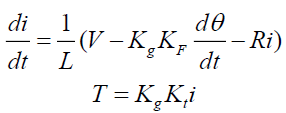
This is a simplified model of the two main parts where the motor produces torque to rotate the solar cell in (Figure 10).
We can now verify the results, as it appears that the position of the solar cell changes when a current passes through the motor in (Figure 11), and thus we got the solar cell with the motor.
Design Solar Tracker
When the cell is in a certain direction, the direction of the sun must be the same as the direction of the solar cells to achieve the highest amount of energy, but sometimes there is a difference between the location of the sun and the location of the solar cell, so we need a controller to reduce the error rate between the location of the sun and the solar cell, Therefore, we will use a Step block to represent the position data of the sun that we obtained by knowing the position of the sun for a full day, and then we will enter the position of the sun into the collection block with the solar cell location data, and then we will use a PID in (Figure 12).
A comprehensive feedback loop commonly used in control systems But we will use PI because D is responsible for changing quickly and the sun moves slowly during the day After completing the process in (Figure 13).
We will notice that the position of the sun matches the position of the solar cell in (Figure 14).
Conclusion
Through the work that we did through the Simulink and linking the solar cell to the rotating motor, it was found that there will be a fuse because this process is effective and low-cost, and the percentage of electrical energy production in solar stations will increase by more than 30% and is considered suitable for the summer and spring seasons because Solar energy is abundant, but there are many types of axes used to move the solar panel, including HTSAT, as this type is expensive and requires strong foundations and is not capable of developing or expanding it The single-axis vertical tracking system VSAT is the best type of tracking because it has a longer life than others and is more reliable. It is considered the best way for cloudy places in general. It can track the sun from sunrise to sunset, is easy to manufacture and maintain, gives higher efficiency, and can change with change. Weather conditions: If a station of this type of tracker is built, it is considered more than a quarter of the others. In the end, the use of the sun-tracking system is very useful and increases the production of solar energy and increases the percentage of utilization of sunlight throughout the day.
References
Gokul, V., Dhinesh, S., Kalaiyarasu, K., Kalidasan, B., & Ravikumar, M. (2021). A comprehensive review on solar cooker tracking techniques for performance enhancement. In IOP Conference Series: Materials Science and Engineering. IOP Publishing.
Indexed at, Google Scholar, Cross ref
Granqvist, C.G. (2003). Solar energy materials. Advanced Materials, 15(21), 1789-1803.
Jovanovic, V.M., Ayala, O., Seek, M., & Marsillac, S. (2016). Single axis solar tracker actuator location analysis. In SoutheastCon 2016. 1-5. IEEE.
Indexed at, Google Scholar, Cross ref
Kannan, N., & Vakeesan, D. (2016). Solar energy for future world:-A review. Renewable and Sustainable Energy Reviews, 62, 1092-1105.
Knowledge Base. (2021). Types of solar trackers and their advantages & disadvantages.
Libra, M., & Poulek, V. (2002). Bifacial PV modules in solar trackers and concentrators. In Physical Methods in Agriculture. 83-104. Springer, Boston, MA.
Ludt, B. (2020).What is a solar tracker and how does it work?.
Mekhilef, S., Saidur, R., & Safari, A. (2011). A review on solar energy use in industries. Renewable and sustainable energy reviews, 15(4), 1777-1790.
Indexed at, Google Scholar, Cross ref
Mroczka, J., & Plachta, K. (2015). Modeling and analysis of the solar concentrator in photovoltaic systems. In Modeling Aspects in Optical Metrology. 9526, 340-347. SPIE.
Indexed at, Google Scholar, Cross ref
Ray, S., & Tripathi, A.K. (2016). Design and development of tilted single axis and azimuth-altitude dual axis solar tracking systems. In 2016 IEEE 1st International Conference on Power Electronics, Intelligent Control and Energy Systems (ICPEICES). IEEE.
Indexed at, Google Scholar, Cross ref
Tiwari, G.N., & Tiwari, A. (2016). Handbook of solar energy. 498, Singapore:
Received: 28-May-2022, Manuscript No. JIACS-22-12101; Editor assigned: 30-May-2022, PreQC No. JIACS-22-12101 (PQ); Reviewed: 14- Jun-2022, QC No. JIACS-22-12101; Revised: 27-Jun-2022, Manuscript No. JIACS-22-12101(R); Published: 04-Jul-2022
